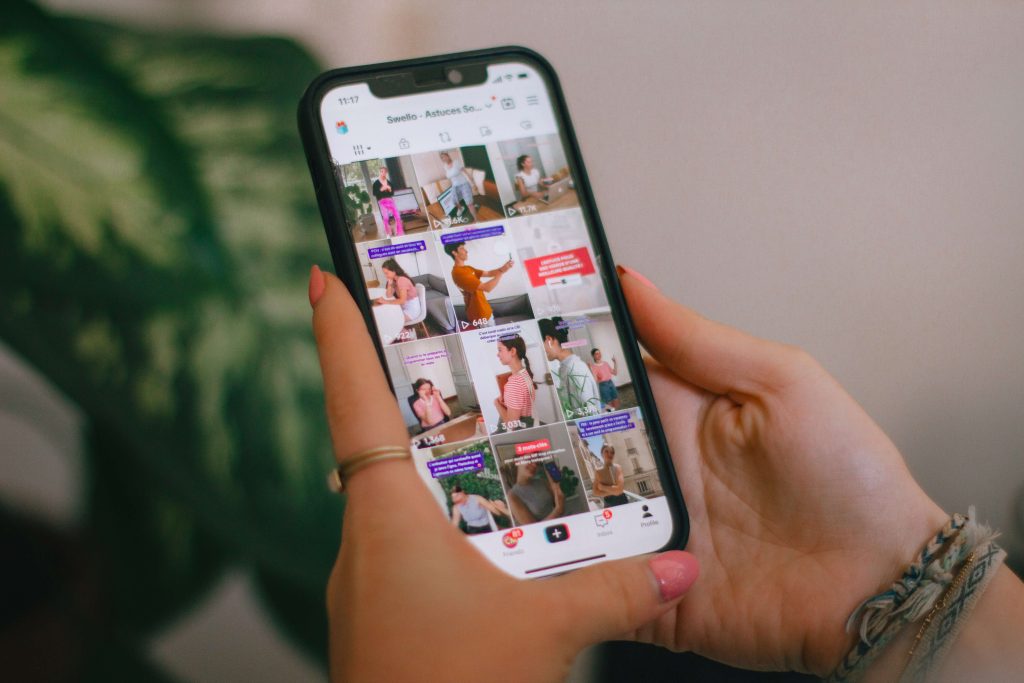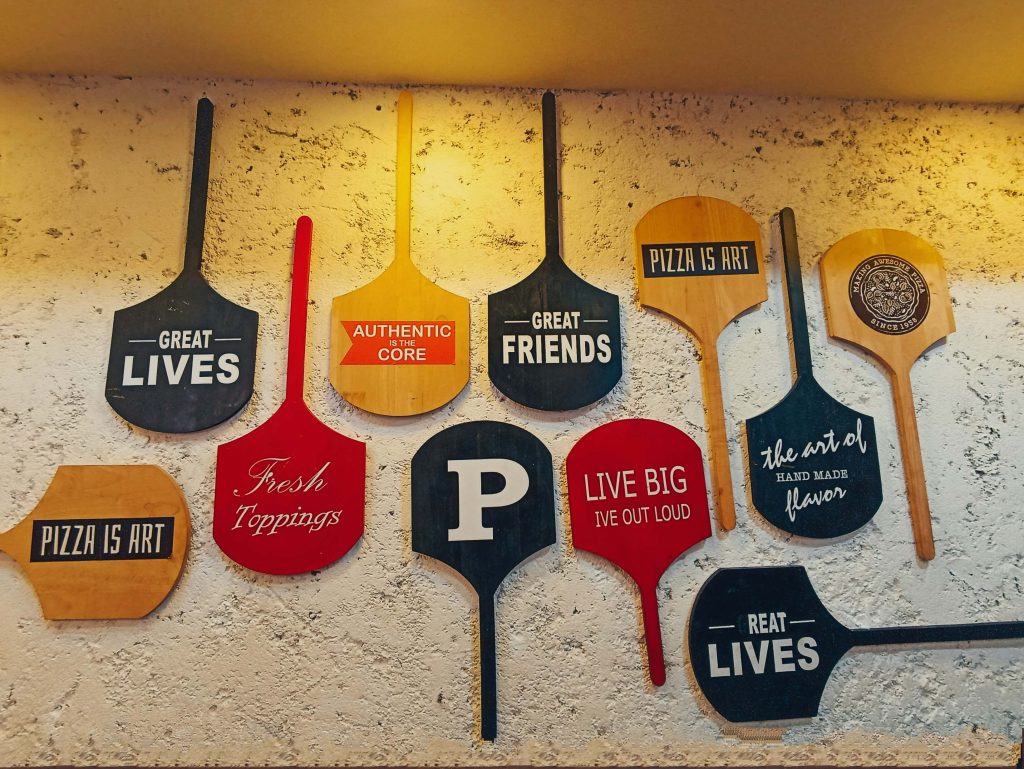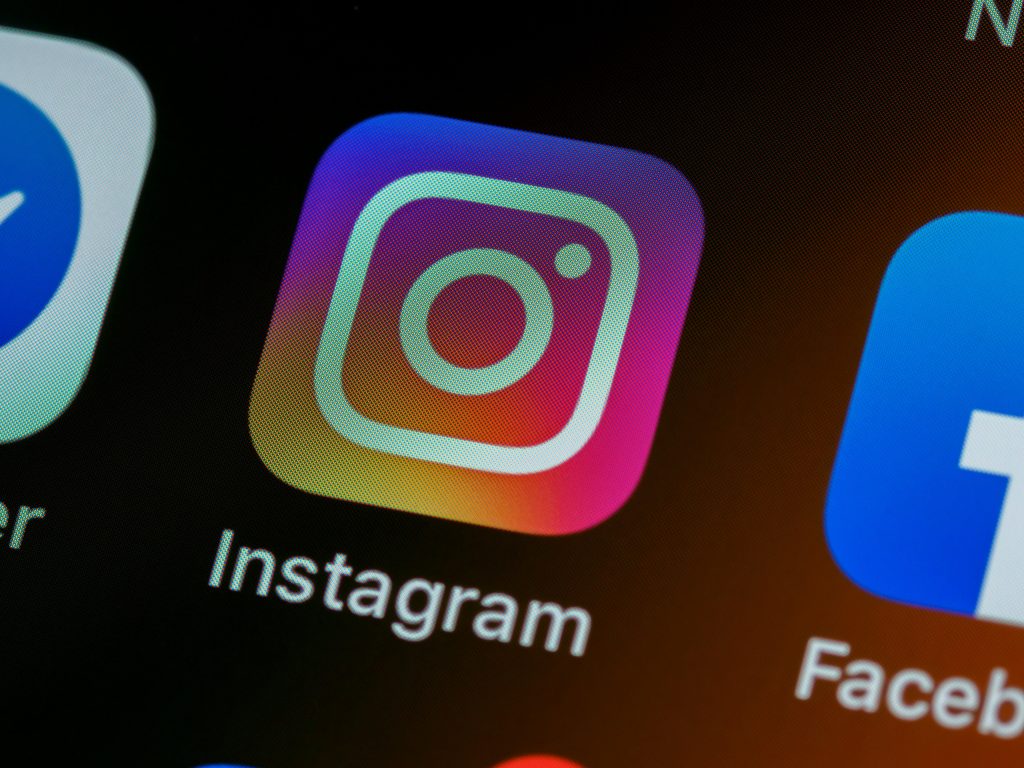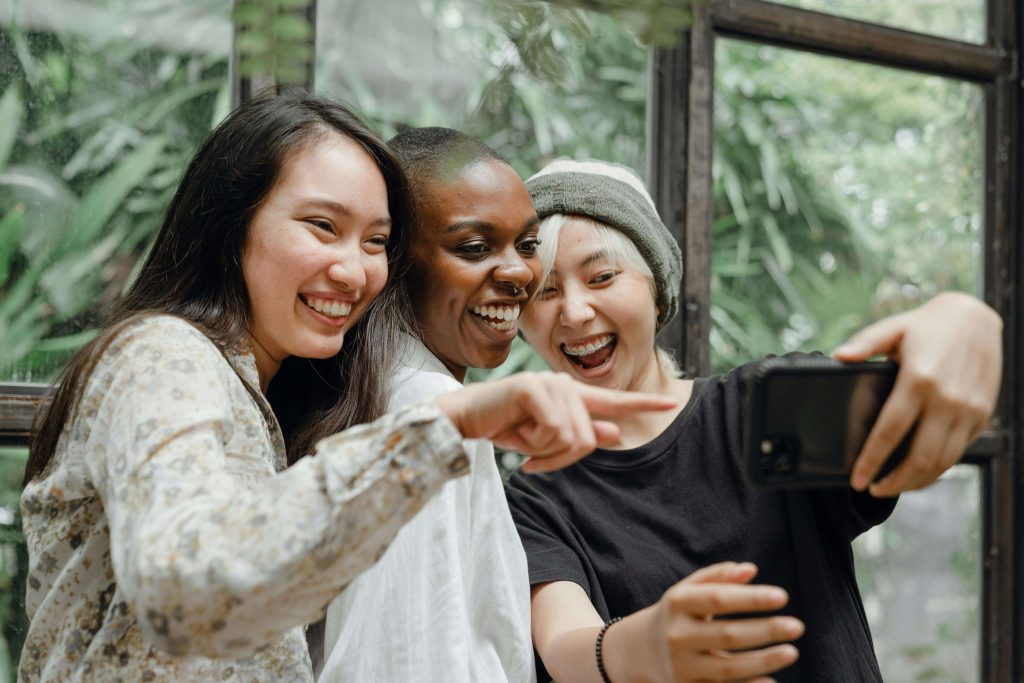How to Rank Higher in TikTok Search Results

Did you know that TikTok has already become an all-knowing ask-me-anything machine? Even though it hasn’t won the search engine battle with Google, it has conquered the hearts of the younger Gen Z audience in particular. Speaking in relationship terms, Gen Zers dumped Google for TikTok: 74% of them go to TikTok to find products and services, and over half (51%) prefer it over Google. Generation Z is not the only demographic cohort that turns to this social app for information. For instance, when digging up the statistics across the US, you’ll see that two in five people of all ages browse TikTok as a discovery platform. While recognizing this as a growth prospect, every business wants to occupy a better “seat” in its search results. However, ranking higher on TikTok is a more nuanced and complicated task than it looks. First, you should understand TikTok SEO, which stands for search engine optimization, and the algorithmic approach to content rankings on the platform. After that, we’ll teach you how to optimize your TikToks for SEO. What You Should Know About TikTok’s Search Algorithm Like Google’s algorithms, TikTok applies its own ranking systems and methods to size up content, grade it, and display the most suitable pieces in front of users whenever they type a query in the search bar. But how do the TikTok search algorithms decide on what to show first, second, third…? Let’s review what bears the biggest weight for TikTok and sort out entirely weightless factors. What TikTok Relies On When Preparing Search Results Previous searcher’s behavior Post engagement (likes, comments, and shares) Relevance to the inquiry Video completion rate (Ideal watching time is from start to finish.) Location Device Language On TikTok’s own FAQ, they state: “SearchOur search feature allows you to search for content on TikTok. It also recommends search terms for you to discover content. Factors that may influence your search results include: User interactions: Your past search behavior and the content you like, share, comment on, and watch in full or skip. Content information: How relevant the content is to your search, hashtags, and the sound used. User information: Device settings, language preference, and location. These factors help us predict how relevant and interesting content might be to a viewer. Different factors can play a larger or smaller role in what’s recommended, and the importance—or weighting—of a factor can change over time. For many users, how relevant the content is to the specific term entered is generally weighted more heavily than other factors.“ What TikTok Doesn’t Count In When Preparing Search Results Profile visits and aesthetics Follower count Account verification (A “verified” badge won’t help you outrank others on TikTok.) Video’s age Posting frequency Direct user relations (e.g., mutual followers) Also note: Organic social search results on TikTok don’t depend on whether a video is promoted through advertising. In that regard, paid promotions will enhance your visibility but won’t boost your TikTok search rankings. How to Optimize Your TikTok Content for Search Now, let’s focus on improving your TikToks for search engine optimization and gaining top-tier positions. 1. Do research and find out what your audience is after. Do you truly understand your target audience: their values, concerns, needs, etc.? What exactly are your potential customers looking for on TikTok? Once you figure it out, you can match the search intent and tailor your content to the user’s specific tastes and interests. Here’s how to do that: Start typing your targeted keywords in the search bar (TikTok auto-suggests the most popular phrases). Analyze the top performers in your niche (preferably your direct competitors) and scroll through their TikToks. Peep into the comments section under viral videos related to your industry and rummage out suggested topics and ideas. Ask your audience what they’re curious about. For example:Asking what bothers TikTok users from the scientific viewpoint, the Science World team answers those questions in a series of video mini-lessons. @scienceworldca 🦑 Science Class in Session! 🦑 Learn about deep sea life in today’s Ask Science World and what it takes to travel to the bottom of the ocean at Science World’s feature exhibit, James Cameron – CHALLENGING THE DEEP, on now until January 1, 2024. #AskScienceWorld #ChallengingtheDeep #scienceworldca ♬ Funk It Up – John Etkin-Bell Grant Aldrich, Founder of Online Degree, also adds that it’s important to consider seasonality. “It’s no surprise that, much like any other platform, TikTok experiences spikes in searches driven by certain seasons, such as the back-to-school season or winter holidays. Before these periods arrive, explore seasonal queries and schedule your posts in advance to give TikTok algorithms time to evaluate your content and make it discoverable during the highest search volume.” 2. Use the audience’s preferred language. Do you aim to target multilingual markets on TikTok? If yes, you must tap into geographic customer segmentation and produce content in different languages (the app is available in over 50 languages). Besides, if your videos are in the user’s chosen language, they are more likely to appear in their search results on TikTok (the app reckon with users’ language preferences, remember?). As Chris Aubeeluck, Head of Sales and Marketing at Osbornes Law, puts it, “Diverse markets have unique inquiries, challenges, and needs. When tailoring your messages to a specific linguistic context (language, communication style, terminology, and so on), you can address cultural nuances and localize your content to achieve maximum relevance and rank higher in TikTok search results.” For example:The Osbornes Law firm localizes TikTok videos for Polish-speaking clients who live in the UK. @prawnicy_osbornes_w_uk Czy pracodawcy w UK dbają o bezpieczeństwo i przesztrzegają przepisów BHP wobec pracownika? Jaka jest wasza opinia? #polacywuk #polacywanglii #anglia #praca #pracownik #polonia ♬ Epic Motivation – Kidmada Yet, even in English, you may encounter lexical diversity between generations (compare the Gen X, Millennials, and Gen Z slang) and industries (compare legal and medical jargon). 3. Insert searchable keywords into captions. Again, just like Google, TikTok ranks content based on its appropriateness to user queries. As soon as you include proper keywords in your video captions on TikTok, the system will better understand your content and bring it up in the search results, on the “For You” page, and in the recommended section. Let’s suppose
Why a Strong Unique Selling Proposition Matters

David Brier, a writer and business coach, has called branding ” the art of differentiation.” In other words, what makes your company unique? In a crowded market, unique selling propositions are often the winning factor between brands that succeed and brands that fail. What is a Unique Selling Proposition? Simply put, USPs are what make one company different from the next. There are thousands of companies that sell shoes. How many of those companies donate a pair to a person in need after every purchase? That distinction belongs to Toms Shoes. For someone who wants to do a little good with their shopping, it may be enough of a distinguishing factor to earn Toms a sale. Or maybe you are into fitness but you worry about the artificial additives in protein powders. Transparent Labs builds its brand around natural ingredients and honest labeling. Its USP is built into its name. USPs can be anything. How the brand approaches customer experience, its pricing strategy, or its worldview. The key is to understand what your demographic wants and develop a unique way to give it to them. It’s an important thing to get right. USPs keep customers engaged. To some people, they matter more than the item’s selling price. In this article, we take a look at six unique selling point example companies that you should know about. Example 1 – Zappos: “Powered by Service” Tony Hsieh, Zappos CEO, has never been in the pizza business. Yet, after arriving back at his hotel late at night with a group of hungry clients, he knew just how to satisfy their cravings. Call Zappos. It was 2 AM when Hsieh’s client called the Zappos customer service line. His request—a pizza—was taken seriously. The fashion brand customer service representative found multiple parlors open near the hotel and even placed the order for them. Zappos is famous for this. Sending flowers to a customer after learning her mother had recently passed away. A CX call that went on for a record-breaking ten hours. These stories, of course, are outliers. However, they reflect the brand’s true commitment to excellence in customer service. No, Zappos isn’t the only company in the world selling UGG boots. But what other brand can compete with its commitment to WOW-level service? E-commerce stores selling clothes are a dime a dozen. Zappos’s “Powered by service,” business model allows it to stand out in a crowded marketplace. What other company regularly goes viral for how it handles customer service calls? Example 2 – M&Ms: Chocolate that Melts in Your Mouth, Not Your Hand In the first act of Tommy Boy, Chris Farley’s character is picked up by Richard, a man played by David Spade. Farley immediately spills an entire bag of M&Ms into a dashboard vent. Richard says, “Oh, that’s good. Melted chocolate right inside the dash. That improves the resale value.” Farley says, “I think you’ll be okay here, they have a thin candy shell. ‘Surprised you didn’t know that.” It’s easy to take M&Ms for granted at this stage in the game. Candyshelled chocolates have been so deeply a part of the confectionery cannon for decades now. However, when they first hit the scene in 1941, they solved a real concern for candy lovers worldwide: How do I enjoy my treat on the go without becoming a sticky mess?Answer? That thin candy shell Tommy Boy references to such amusing effect. Common though they may now seem, M&Ms are a legitimately unique product that offers a simple solution to an existing problem. Takes notes: This is the recipe for any great USP. Example 3 – Dollar Shave Club: ” Great A Shave for a Few Bucks a Month” “A great shave for a few bucks a month.” Or, more recently, “Shave time. Shave money.” Their selling proposition is simple but enticing. Spend less money on a product you need. They didn’t invent this business model. It’s effectively the same concept that applies to any subscription business. Pay a nominal fee. Enjoy more convenient access to a product you need anyway. Dollar Shave Club didn’t invent a better razor. They instead developed a business model that reflects the pain points people experience around shaving. Razors need to be replaced constantly. It’s inconvenient. It’s a little pricey. Dollar Shave Club’s USP addresses both concerns with one simple solution. Example 4 – Patagonia: “We’re in Business to Save Our Home Planet” “We’re in business to save our home planet.” That’s a strong statement. In less than ten words, Patagonia manages to elevate its brand beyond the confines of standard terms. Where M&M is focused on making a more convenient candy, Patagonia has set its sights higher. They sell outdoor gear. Their customers have a built-in appreciation for nature. By committing to high-quality recycled materials, and other sustainable production and delivery methods, Patagonia does more than sell hiking equipment. They give customers the chance to contribute to the greater good. The result? A passionate, loyal customer base who comes for the products and stays for the overall brand experience. Example 5 – Domino’s Pizza: “You Got 30 Minutes” Domino’s 30-minute guarantee is now viewed as a failure. Yet, when it first debuted, it made the pizza franchise stand out in a crowded marketplace. At the time, Domino’s could not compete with existing franchises, only on the grounds of quality. They needed an added element of convenience to set them apart. Pizza at your door in thirty minutes or less. Domino’s built its entire business model around this promise. They employed more drivers than cooks. Used boxes that folded faster than any other on the market. They also put enormous pressure on their staff to live up to the promise. Infamously, in 1985, a teenage driver pulled out of the Domino’s parking lot with less than ten minutes to get his pizza out to the customer. He immediately T-boned an oncoming car, causing injuries to the couple inside. The story goes that the store manager reached into the crashed driver’s car
How to Utilize UGC for Your Paid Ad Strategy

In today’s digital world, consumers are flooded with ads from all sides. Traditional marketing strategies just aren’t cutting it anymore, making it harder for businesses to grab and keep their audience’s attention. That’s where User-Generated Content (UGC) comes in. Savvy marketer leaders are turning to UGC to build trust, boost engagement, and supercharge their paid advertising campaigns. Discover how this strategy can transform your marketing efforts. What is User-Generated Content (UGC)? User-Generated Content (UGC) is any form of content—be it text, images, videos, or reviews—that is created and shared by consumers, rather than the brand itself. This content is typically published on social media platforms, online communities, marketing emails, and review sites, giving potential customers a unique, genuine perspective on your products or services. Examples of UGC: Reviews and Testimonials: Written or video reviews posted on platforms like Yelp, Google Reviews, and social media channels where customers share their experiences with your brand. Social Media Posts: Photos, videos, and stories shared by users and affiliates on platforms like Instagram, Twitter, and Facebook that feature your products or services. Unboxing Videos: Popular on YouTube and TikTok, these videos show customers unpackaging and reacting to their purchases, offering an authentic glimpse of what others can expect. https://youtu.be/PQtSX7lJ2Wo?si=FLlJk-VmD4Xenmhx Customer Photos and Videos: Visual content showcasing real customers using and enjoying your products, often tagged with branded hashtags or shared in response to social media challenges. UGC inherently carries the voice of your customers, which adds a layer of authenticity and trust that polished, brand-produced content may lack. By integrating UGC into your marketing strategy, you invite your audience to see real, unfiltered experiences with your brand, making your marketing messages more relatable and believable. Benefits of Incorporating UGC in Paid Ads Integrating User-Generated Content (UGC) into your paid advertising strategy offers a multitude of advantages that can significantly enhance your marketing efforts. From building trust to driving engagement, here are some compelling benefits: Building Trust and Authenticity UGC carries the endorsement of real customers, providing an authentic voice that polished brand content often can’t match. When potential customers see genuine reviews, consistent brand identity, testimonials, and social media posts from their peers, they’re more likely to trust your brand and make purchasing decisions. Enhancing Engagement and Social Proof Content created by other consumers tends to generate higher engagement rates. This is because people relate more to posts from real users compared to traditional ads. High engagement levels also serve as social proof, encouraging others to consider your products or services. Cost-Effective Content Creation Producing high-quality content can be expensive and time-consuming. By leveraging UGC, you can tap into a rich pool of freely available content and content ideas created by your customers. This not only reduces costs but also allows you to maintain a diverse and fresh content stream. Improved Ad Performance Instead of just pumping out a lot of branded content, consider repurposing UGC ads! It offers a fresh take and often plays into trends which may improve click-through and conversion rates! The relatability and authenticity of UGC make ads more compelling and persuasive, resulting in increased engagement and potentially higher Return on Ad Spend. By collaborating with an expert PPC management company, you can fine-tune these efforts for maximum performance, ensuring your ads stay relevant and deliver strong results. Customer Loyalty and Community Building Encouraging your audience to create and share UGC fosters a sense of community and belonging. Recognizing and featuring user content in your paid ads makes customers feel valued and appreciated, enhancing brand loyalty. Enhanced Reach and Visibility When users share their experiences with your brand, their content reaches their own network of followers, expanding your brand’s reach organically. This can help attract new customers and increase your visibility without additional spending Identifying High-Quality User-Generated Content To maximize the impact of User-Generated Content (UGC) in your paid ad strategy, it’s crucial to identify and curate high-quality content that resonates with your target audience and aligns with your brand values. Here are some effective strategies to find and select the best UGC: Monitoring Social Media and Brand Mentions Use social listening tools to track mentions of your brand, products, and services across social media platforms. This allows you to quickly identify organic content created by your customers, including posts, photos, and videos that may be suitable for your campaigns. Encouraging Customers to Share Their Experiences Actively encourage your customers to share their experiences with your brand by running contests, giveaways, or hashtag campaigns. Incentivizing UGC not only increases the volume of content but also provides you with a diverse range of material to choose from. Using Branded Hashtags and Social Media Challenges Create and promote branded hashtags that customers can use when sharing their content. Social media challenges related to your brand or products can also drive engagement and generate high-quality content that you can repurpose for your ads. Leveraging UGC Platforms and Tools Utilize specialized UGC platforms and tools that aggregate and curate user-generated content. These tools can help streamline the process of finding relevant and high-quality UGC, making it easier to integrate into your paid ad strategy. Assessing Content Quality and Relevance Not all UGC will be suitable for your campaigns. Ensure the content you select is high-quality in terms of clarity, creativity, and relevance to your brand. It should also align with your marketing goals and resonate with your target audience. Engaging with Content Creators Reach out to users who create high-quality content and build relationships with them. Engaging with your top content creators can encourage them to produce more content and become brand advocates. Integrating UGC into Your Paid Ad Strategy Once you’ve identified high-quality User-Generated Content (UGC), the next step is integrating it into your paid ad strategy. Here’s how to effectively incorporate UGC into your campaigns: Choosing the Right UGC for Different Campaigns Select UGC that aligns with the specific objectives and target audience of each ad campaign. Whether it’s a heartwarming testimonial or an eye-catching customer photo, tailor the content to fit the context and purpose of your ads. Obtaining Permission for Using UGC Always seek
Everything About Instagram Partnership Ads

Meta has worked hard to equip advertisers and brands with the right tools to reach their audiences through their social media platforms such as Facebook, Instagram, and WhatsApp. As more and more brands lean towards content creators and influencers for their campaigns, Instagram Partnership Ads make it easier for you to boost content that tags or mentions your brand. What are Instagram Partnership Ads ? Instagram Partnership ads, also known as branded content ads, is a practice of boosting collaborative content such as creator posts or influencer content by a marketing team as a part of your social strategy to reach a broad audience of potential customers. Before the introduction of Instagram partnership ads, the only way to highlight an influencer partnership was to tag them in your caption. Instagram Partnership ads feature the collaboration through the ad’s header and the partnership label, which reveals both the brand’s and the creator’s account as posters for in-feed ads or includes a label “Paid partnership with (brand)” for Instagram Story campaigns. Partnership ads also give brands the opportunity to turn unofficial content into a campaign opportunity every time a relevant user mentions or tags them—a benefit for both the brand and the creator. It’s also a good way to boost the business partner’s high-performing content and reach a wider audience of potential customers and therefore achieve business goals. Why Should Brands Run Instagram Partnership Ads? Your target customers are more likely to trust user-generated content (UGC) or content by an influencer over regular paid ads. While your audience may be interested to shop, they don’t necessarily want to be sold to. In fact, 69% of consumers trust recommendations given by influencers. With partnership ads, Instagram has made it easier to launch and manage influencer marketing campaigns. Here’s why you should start running Instagram partnership ads: Scale content production – Creating all your content in-house can take a lot of time and resources, both of which smaller brands may not have. Focusing on partnership ads can help you get content at scale and post more content without the burden of creating all the content in-house.Scaling content production can help you boost organic traffic and, as a result, drive more sales. Increase brand loyalty and trust – Partnerships can help you build trust with your audience by allowing them to see your product and services in real-world use. Partnering with the right influencer can help your brand appear more relatable and human, providing social proof with the help of authentic content. The best influencers build personal relationships with their audience, making them trusted sources of information. A personal recommendation by an influencer can quickly turn regular followers into loyal customers. Reach a wider audience – Struggling to get more views for Instagram? Partnership ads can give you access to a wider, more engaged audience that you otherwise wouldn’t have access to. Affect purchase intent – A product endorsement by a trusted influencer is close enough to a recommendation by a friend. Seeing a product recommended by an influencer can be the ultimate push to encourage leads to convert and therefore maximize marketing efforts. Interestingly, a study by a creator marketing platform revealed that 88% of consumers have purchased an item after it was recommended by an influencer. Now that you see the benefits of Instagram Partnership ads, and if you don’t have the budget to work with popular influencers with solid followings, you can either turn to the pitch deck design agency and attract investors or start with smaller yet loyal influencers who are more cost-effective. If you choose the former, consider looking into pitch deck examples to get an idea. Here’s how you can create Instagram Partnership ads and start running campaigns that deliver results: 1. Find the Right Instagram Content Creator or Influencer Every tagged mention is an opportunity for a partnership. However, you must be strategic about choosing the right influencer for your brand. Whoever you partner with will be the face of your business, so it’s crucial to choose someone who embodies your brand’s personality and ideals. Before you decide on an influencer, you must take a look at their niche, engagement, and audience. It’s also a good idea to create collaboration briefs where you put all important information about the expectations of your campaign, guide to product, and influencer marketing tactics to make the most out of paid partnership ads. Their niche must be related to your product and services to ensure they can help you reach the right audience through ads, while a high engagement rate can help you determine if the partnership will be worth your time and investment. Coffee appliance brand Nespresso leverages the partnership tool to feature influencer-created content on its feed. Since Nespresso is very particular about branding and style, the brand only chooses influencers who can replicate it or have a similar aesthetic. Tip: The post will appear in both of your feeds so the content must feel natural and organic on both sides. 2. Decide on The Instagram Ad Type Like any regular ad, Instagram partnership ads support all of the existing formats, such as in-feed photos, videos, carousels, Reels, and Instagram Stories. While each format will have its advantages, your choice should highly depend on what feels most natural for you and your chosen influencer partner. However, keep also in mind that the chosen Instagram ad type can affect the Instagram ads cost. For instance, one creator may be more famous for their Reels, while another may prefer still photographs. It will help to look at your past content to determine what format performs best. Choosing the right ad format will also depend on your campaign goals. For example, Reels may perform better for engagement as this content type may appear on the explore page and therefore you can get more likes for Instagram Reels. At the same time, Instagram Story ads may be the better option for conversions. 3.Ask Influencers to Test Your Products Launching a new product? One of the fastest
Google AI Search: Everything You Need to Know

What comes to mind when you hear the word ‘artificial intelligence‘? It immediately conjures images of bots thinking and working like humans. However, AI comes in different types and forms. But did you know AI technology has recently penetrated the search industry? Enter Google AI search, the integration of AI technology into the most popular search engine in the world. It seeks to improve the search accuracy, efficiency, and personalization. The ultimate goal is to enhance the user experience (UX) on the search engine results pages (SERPs). Sure enough, it’s gradually transforming how we use Google and find information via the web. This blog will what you need to know about Google AI search. Learn more about the rise of AI in the search industry and its impact on SERP. More importantly, discover the top Google search trends to expect with the AI integration. Here’s what we’ll cover: The Rise of AI in Search History & Current State of Google Search The Rise of Google AI Search What is Google AI Search The Impact of Google AI on SERP Users How Google AI Search Could Potentially Impact Your Advertising How Google AI Search Could Potentially Impact Your SEO Google Search Trends to Expect with Generative AI Conclusion Feel free to skip to a section that best interests you, or read on! The Rise of AI in the Search Industry Who doesn’t know Google? Of course, it’s the most popular search engine in the world, accounting for nearly 92% of the global search engine market. Its closest competitor, Microsoft’s Bing, only has a market share of more than 3%. That’s quite the difference! Specifically, Google comprises almost 83% of the desktop search engine market and over 95% of the mobile market share. It allows you to search for data via the Internet. All it takes is to type in the search engine field using specific keywords, and the platform will provide you with tons of relevant information. Let’s look at the evolution of the Google search engines below. History and Current State of Google Search To understand what Google offers as a search engine, here are some of its key milestones before the recent AI introduction: 1998: Google was formed and launched its search engine. 2000: It introduced an online advertising platform called AdWords. 2004: It made its initial public offering. 2007: It launched Universal Search, having combined various content forms on SERP. 2011: The Panda upgrade targeted low-quality content. 2012: The Penguin upgrade was released to reduce web spam. 2013: The Hummingbird update enhanced query comprehension. 2015: The Mobilegeddon upgrade prioritized mobile-friendly websites. 2015: Google introduced the machine learning algorithm RankBrain. 2019: The BERT upgrade improved natural language processing. 2021: It introduces the MUM AI model for complicated inquiries. The Rise of Google AI Search Artificial intelligence (AI) is essentially the simulation of human intelligence into digital tools and technologies. Examples are chatbots, interactive voice response (IVR) systems, and generative AI, such as ChatGPT and Gemini. According to Statista, the global AI market will reach $305.90 billion in 2024 and $738.80 billion by 2030 at a 15.83% compound annual growth rate (CAGR). This means that AI’s impact on sectors like the search industry will continue to grow and expand. AI impacts various sectors, which applies to the search industry as well. Since 2015, Google has already begun integrating AI technology into SERP. However, 2024 is a game-changer in the industry. What is Google AI search? Google AI search is a new way of searching that provides users with the most relevant information to their queries using the integrated generative AI feature. However, it’s still experimental as of the time of writing, which has begun rolling out to everyone in the United States, with more countries following suit. Learn more about how Google AI search affects search engine users below. The Impact of Google AI on SERP users It’s no secret how Google constantly updates its search engine algorithms to provide relevant search results and improve the overall UX. In fact, it considers various key factors that determine its search results: Meaning refers to the intent behind your query. What are you looking for in the first place? Relevance considers content related to the search query. Are these pieces of information relevant to what you’re looking for? Quality focuses on the value of content pieces. Are they helpful, insightful, and informative to you? Usability factors in the usability of content. Is a particular content more accessible than the rest? Context considers your location, past search history, and search settings. Which content is the most relevant and useful to you at the moment? AI can be such a game-changer in the search industry. It can significantly improve search engine algorithms for crawling and indexing web pages. Ultimately, it can provide users with what they exactly need based on data analytics. That said, AI can substantially impact the following: Search visibility: As a business, you aim to be visible on the Internet. SEO involves optimizing your website, writing relevant content, and promoting your site on other online platforms to improve your search engine rankings. However, with AI-Google integration, it’s also best to implement AI-powered SEO to enhance your web and content visibility. Search traffic: Not only do you aim to boost your online visibility, but you also seek to drive traffic to your website from SERP. Understanding the Google search essentials is crucial to optimize your website and drive organic traffic. With AI-Google integration, there’s a need to align your SEO strategies with Google algorithms. Business revenue: Today’s Web3 SEO not only improves your search rankings and increases your website traffic but also helps build your site authority. Ultimately, it can go as far as generating leads and converting sales for your business. As a business, understand the impact of Google AI search to align your SEO strategies and maximize your income potential. How Google AI Search Could Potentially Impact Your Advertising 1. Changing Search Queries: As people start using more natural language in their searches, like when asking
How to Run a Contest to Boost Engagement

Ever wondered how some brands keep their audience engaged? Some of them have mastered the art of running a contest or giveaway!Imagine transforming casual followers into enthusiastic participants and loyal customers—all through the excitement of winning something valuable. Let’s explore how to create a buzz that draws in new followers and strengthens your existing community. Step 1. Define Your Objectives Before launching your contest, just like before launching an app, it’s crucial to define your objectives. What do you hope to achieve? Common goals include: Increasing social media followers Growing your email list Boosting product awareness Driving traffic to your website Clear objectives will help you tailor your contest to meet specific needs. For example, to grow your email list, ask participants to sign up with their email addresses. Using an email verification tool ensures the quality of your email list, reducing bounce rates and improving deliverability. You can also directly implement lead generation forms to collect emails from your website. Step 2. Choose the Right Type of Contest You can run various types of contests, each with its benefits: Photo contests: Encourage users to share photos related to your brand or product, creating a wealth of user-generated content for future marketing campaigns. Caption contests: Followers caption a picture for a chance to win, driving high engagement rates and fostering creativity. Trivia contests: Engage your audience with fun questions, increasing interaction and time spent on your platforms. Sweepstakes: Simple and effective—participants enter their details for a chance to win. Choose a contest that aligns with your objectives and appeals to your target audience. Add a link to the contest to your digital business card to allow people in your network to participate. Step 3. Create a Gallery or Highlight Reel Consider creating a gallery or highlight reel of the best submissions. This could be a dedicated section on your website or a video compilation shared on social media platforms. Such galleries: Celebrate your participants Serve as a testament to your brand’s vibrant community Showcase engagement over time Step 4. Select Attractive Prizes Your prize needs to be attractive enough to motivate participation. Consider offering: One of your products A gift card An exclusive experience The prize should be relevant to your audience and valuable enough to generate interest. For example, if you run a small business for beauty products, offering a bundle of your best-selling products would be more appealing than a generic gift card. The prize should entice and attract your target audience’s desires, driving more entries and engagement. @stylebysammy thank you guys so much for 50k!! heres whats included: 🩷🩷🩷🩷🩷🩷🩷🩷🩷🩷 -40oz cream Stanley -glow recipe -$25 whitefox gift card -LV pink keychain -iconic skincare headband -headband and wrist bands for skincare -jewelry case -gold bead bracelets, pearl bracelets -iconic H bracelet -iconic VC clover necklace -chunky gold hoops -gold rings and ear cuffs -gold necklaces (evry jewels!) 🩷🩷🩷🩷🩷🩷🩷🩷🩷🩷🩷🩷 HOW TO ENTER: 1. follow me on tiktok (stylebysammy) and on instagram (sammoffettt) 2. tag 5 friends (each comment is a new entry) 3. for extra entries, repost and tag me 🩷 MUST LIVE IN THE UNITED STATES i cant wait!! thank you guys so much 🩷🩷🩷 ♬ maneater – <3 Step 5. Set Clear Rules and Guidelines Clear rules and guidelines are essential for any contest. Include: Eligibility requirements: Who can enter (age, location, etc.) Entry methods: How participants can enter the contest Duration: Start and end dates Winner selection: How and when winners will be chosen and notified Legal disclaimers: Protect your brand Transparency in your contest rules builds trust with your audience and ensures a smooth-running contest. For example, Cruise America, a company known for its RV rentals in California clearly mentioned all the rules and guidelines in their “Explore Farther” giveaway, setting clear expectations for entries. View this post on Instagram A post shared by Cruise America (@cruiseamericarv) View this post on Instagram A post shared by Cruise America (@cruiseamericarv) Step 6. Showcase Entries Showcasing participant entries on your social media channels, website, or newsletter can boost engagement. Highlighting entries: Makes participants feel valued and appreciated Inspires others to participate Keeps the excitement and momentum going Sharing UGC can also fill your content calendar with authentic, engaging content created by your audience. You can also leverage AI in social media marketing to prompt the contest. Step 7. Use the Right Tools Using the right tools can significantly impact the success of your contest: Entry Management: Salesforce Forms can help you manage entries and data efficiently. Content Creation: Effective content marketing tools help you craft compelling messages and streamline your content creation process. Social Media Management: Tools like Bulk.ly offer scheduling and management features to keep your posts consistent and timely. Step 8. Engage with Participants Engagement doesn’t stop once the contest is live. Interact with participants by: Liking, commenting, and sharing their entries Showing that you value their participation Creating a sense of community Consider utilizing CRM platforms to manage participant information and interactions effectively. Social media walls can be used to display live updates and showcase participant entries in real time. Video conferencing platforms can be used for live announcements or engaging with participants, adding a personal touch to your contest. Step 9. Monitor and Analyze Track your contest’s performance using analytics tools. Key metrics to monitor include: Participation rate Engagement (likes, shares, comments, and other interactions) Traffic increase to your website Conversions (new followers, subscribers, or customers) These metrics help you understand your contest’s success and identify areas for improvement, such as optimizing lower conversion rates. Adjusting your strategies based on this data ensures that future contests are even more successful. Equipping your sales and marketing teams with team calendar software ensures they stay organized and collaborate effectively on upcoming campaigns and events. Step 10. Promote Your Contest Promotion is vital to a successful contest. Utilize various channels to spread the word: Social media: Use WhatsApp CRM to share regular updates and encourage participation. Email marketing: Run an email marketing campaign to attract more participants. Blog posts: Write a detailed blog post about your contest and share it across platforms. Influencer partnerships: Extend your reach and attract a broader audience. Competitor analysis: Conduct a Google Ads competitor analysis to refine
The Ultimate Guide to Instagram Paid Ads

With 2 billion active users, running Instagram paid ads isn’t an option to cut through the noise. Everything you should know about Instagram paid ads is here.
How to Avoid Email Phishing Attacks

Don’t become a victim of phishing attacks. Here are some handy tips to best protect yourself, your team members, and loved ones online.